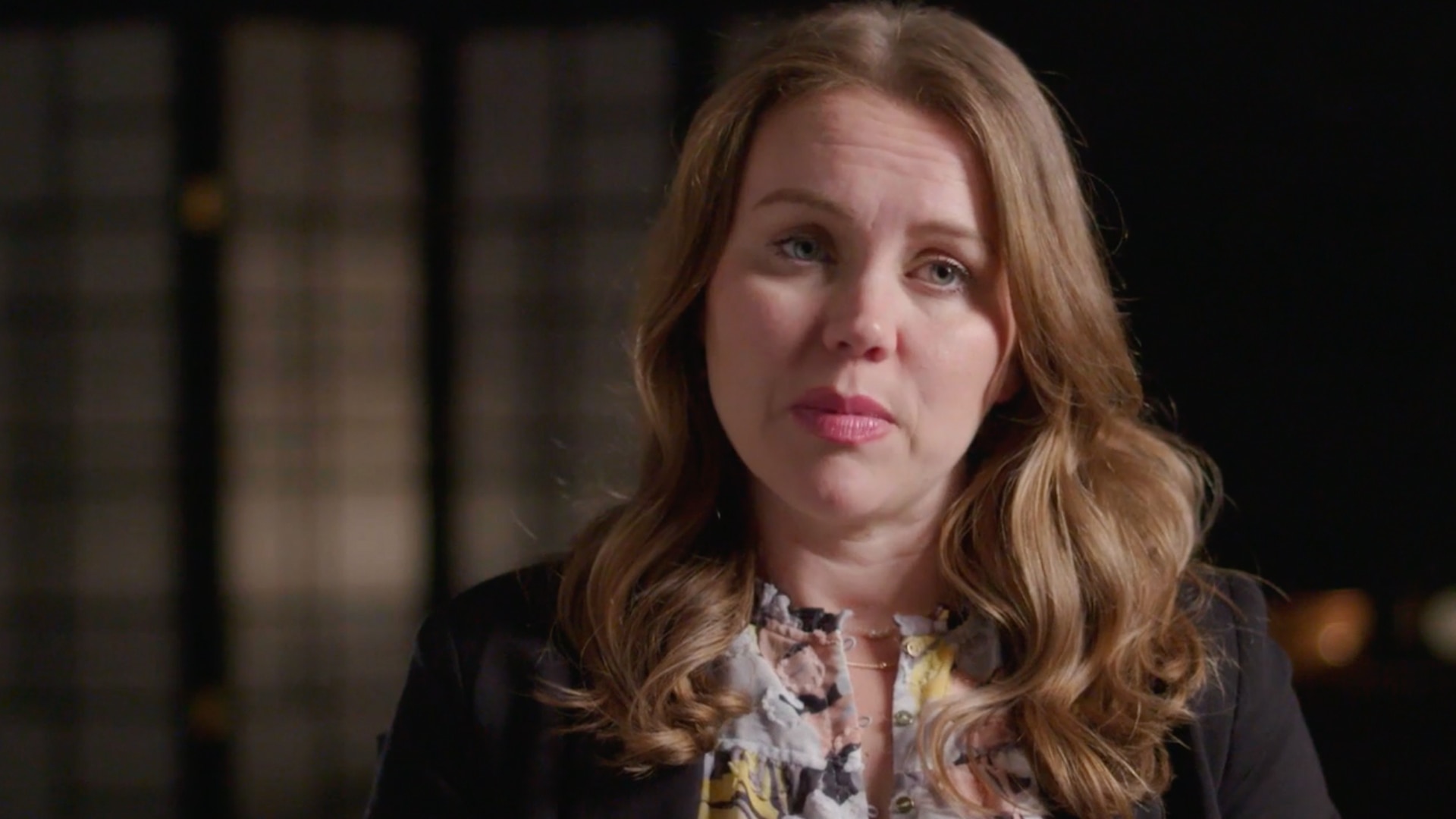Escaping captivity refers to the act of breaking free from confinement or imprisonment. It often involves overcoming physical barriers, outwitting captors, and demonstrating resilience in the face of adversity.
Throughout history, tales of escaping captivity have captivated imaginations and inspired countless works of art and literature. These stories highlight the indomitable spirit of those who refuse to be defined by their circumstances and the importance of hope in the darkest of times.
Escaping captivity can have profound psychological benefits for survivors. It can empower them to reclaim their sense of agency, rebuild their lives, and find healing from the trauma they have endured. Moreover, it can raise awareness about the plight of captives and the need for their protection.
- Rudy Hermann Guede Uncovering The Truth And Unraveling The Controversies
- Unveiling The Truth Kevin Gates Marital Status Revealed
- Unveiling The Legacy Of Leprosy Pioneer Sidney De Carvalho Mesquita
- Unveiling Johvonnie Jacksons Net Worth Unlocking The Secrets To Financial Success
- Unveiling The Secrets Of Jenny Curry A Culinary Journey Of Flavors And Traditions
Escaping Captivity
Escaping captivity is a complex and multifaceted endeavor that can involve physical, psychological, and emotional challenges. The following eight key aspects shed light on the various dimensions of this topic:
- Planning: Developing a strategy for escape, including gathering resources and identifying potential weaknesses in security.
- Resilience: Maintaining hope and determination in the face of adversity and setbacks.
- Collaboration: Working with others to increase chances of success.
- Resourcefulness: Using available materials and knowledge to overcome obstacles.
- Timing: Choosing the right moment to attempt escape, based on factors such as guard schedules and environmental conditions.
- Deception: Misleading captors through tactics such as distraction and manipulation.
- Courage: Facing fear and taking risks in order to break free.
- Aftermath: Dealing with the physical, psychological, and social challenges that may arise after escaping captivity.
These aspects are interconnected and often play out in complex ways. For example, resilience may enable captives to endure harsh conditions and maintain hope, while collaboration can provide opportunities for planning and resourcefulness. Understanding these key aspects is crucial for gaining a comprehensive perspective on escaping captivity.
Planning
In the context of escaping captivity, planning plays a pivotal role in increasing the chances of success. A well-conceived strategy can provide a roadmap for escape, helping captives to overcome obstacles, avoid detection, and reach safety.
- Unveiling Molly Shannons Marital Status Surprising Revelations
- Unveiling The Secrets Of Lauren Godwins Height Discoveries And Insights
- Unveiling The Extraordinary World Of Nydia Bertran A Journey Of Insights And Empowerment
- Unveiling The Age Gap Larry Strickland And Naomi Judds Enduring Love
- Unveiling The Profound Impact Of Robert Habecks Age Discoveries And Insights
One crucial aspect of planning is gathering resources. This may involve acquiring tools, supplies, and information that can aid in the escape. For instance, a captive might gather items such as a map, a compass, a flashlight, and food rations. Additionally, identifying potential weaknesses in security is essential. This involves observing guard patterns, routines, and physical vulnerabilities in the captive environment. By carefully assessing their surroundings, captives can identify the best time and place to attempt an escape.
Real-life examples abound of successful escapes that were meticulously planned. In 1944, a group of Allied prisoners of war famously escaped from the German Stalag Luft III camp by digging a tunnel and using forged documents to disguise themselves as civilians. Their escape plan, which had been in development for months, involved gathering tools, mapping out the camp, and coordinating their actions with precision.
Understanding the connection between planning and escaping captivity is crucial for anyone seeking to break free from confinement. By developing a comprehensive strategy, gathering essential resources, and identifying potential weaknesses in security, captives can significantly increase their chances of success.
Resilience
In the context of escaping captivity, resilience emerges as a formidable weapon against despair and a beacon of hope amidst adversity. It is the unwavering ability to maintain hope and determination even when faced with seemingly insurmountable challenges and setbacks.
- Strength in adversity: Resilience allows captives to draw upon inner reserves of strength and determination, enabling them to withstand harsh conditions, endure psychological torment, and maintain a positive outlook in the face of adversity.
- Finding meaning in suffering: Through resilience, captives can find meaning in their suffering and use it as a catalyst for personal growth. By reframing their experiences and focusing on finding purpose, they can transform adversity into a source of strength.
- Hope as a guiding light: Resilience is fueled by hope, which serves as a guiding light in the darkest of times. It sustains captives' belief in a better future and keeps them focused on the possibility of escape.
- Learning from setbacks: Rather than being deterred by setbacks, resilient captives learn from their mistakes and use them as opportunities to refine their plans and strategies. They recognize that setbacks are inevitable and view them as stepping stones on the path to freedom.
Resilience is not merely a passive quality; it requires active cultivation. Through practices such as meditation, mindfulness, and positive self-talk, captives can develop and strengthen their resilience, empowering them to overcome the challenges of captivity and emerge as survivors.
Collaboration
In the context of escaping captivity, collaboration emerges as a powerful force that can significantly increase the chances of success. Working together, captives can pool their resources, knowledge, and skills to overcome obstacles, devise escape plans, and support each other through the challenges of confinement.
Collaboration fosters a sense of community and shared purpose among captives. It allows them to leverage their collective strengths and compensate for individual weaknesses. By combining their diverse perspectives and expertise, they can develop more comprehensive and effective escape strategies.
Real-life examples abound of successful escapes that were made possible through collaboration. In 1979, six Iranian hostages escaped from their captors in Tehran by working together to dig a tunnel under the American embassy. They coordinated their efforts, took turns digging, and provided each other with emotional support throughout the ordeal.
Understanding the connection between collaboration and escaping captivity is crucial for anyone seeking to break free from confinement. By fostering a spirit of teamwork and cooperation, captives can increase their chances of success and find strength in unity.
Resourcefulness
In the context of escaping captivity, resourcefulness emerges as a critical component, empowering individuals to overcome seemingly insurmountable obstacles and increase their chances of success. It involves utilizing available materials and knowledge to devise creative solutions, adapt to changing circumstances, and find a path to freedom.
Resourcefulness requires a combination of ingenuity, problem-solving skills, and a deep understanding of one's environment. Captives who are resourceful can transform ordinary objects into tools, find hidden pathways, and exploit weaknesses in security systems. For instance, they may use a spoon to dig a tunnel, convert clothing into a disguise, or create a diversion to distract their captors.
Real-life examples abound of resourceful individuals who have escaped captivity. In 1942, British officer Roger Bushell organized a mass escape from the German Stalag Luft III camp. The prisoners used forged documents, homemade compasses, and a variety of other resources to dig a tunnel and escape the camp. Their resourcefulness and determination allowed them to overcome significant obstacles and achieve their goal.
Understanding the connection between resourcefulness and escaping captivity is crucial for anyone seeking to break free from confinement. By developing their resourcefulness, captives can empower themselves to find creative solutions, adapt to changing circumstances, and increase their chances of success.
Timing
Timing plays a crucial role in the success of an escape attempt. Captives must carefully consider factors such as guard schedules, environmental conditions, and the availability of resources when planning their escape.
Choosing the right moment to escape can significantly increase the chances of success. For instance, if a captive knows that the guards are less vigilant during certain hours of the day or night, they may choose to attempt their escape during that time. Similarly, if the weather conditions are favorable, such as during a storm or heavy fog, the captive may have a better chance of evading detection.
Real-life examples abound of the importance of timing in successful escapes. In 1962, Frank Morris and the Anglin brothers famously escaped from Alcatraz Federal Penitentiary during a stormy night. They carefully planned their escape for months, taking into account the tides, weather conditions, and guard schedules. Their meticulous attention to timing played a significant role in their successful escape.
Understanding the connection between timing and escaping captivity is crucial for anyone seeking to break free from confinement. By carefully considering the right moment to attempt an escape, captives can increase their chances of success and achieve their goal of freedom.
Deception
In the context of escaping captivity, deception emerges as a potent tool that can increase the chances of success. By misleading captors through tactics such as distraction and manipulation, captives can create opportunities to escape, evade detection, and ultimately regain their freedom.
- Distraction: Creating a diversion or disturbance to draw attention away from the escape attempt. This could involve making noise, starting a commotion, or engaging the captors in conversation.
- Manipulation: Using psychological tactics to influence the captors' behavior or perception. This could involve playing on their emotions, exploiting their weaknesses, or providing false information.
Real-life examples abound of successful escapes that were made possible through deception. In 1943, British officer Airey Neave escaped from Colditz Castle, a German prisoner-of-war camp, by disguising himself as a German officer and using forged documents. His elaborate deception allowed him to walk out of the camp undetected.
Understanding the connection between deception and escaping captivity is crucial for anyone seeking to break free from confinement. By mastering the art of deception, captives can increase their chances of success and achieve their goal of freedom.
Courage
In the context of escaping captivity, courage emerges as an indispensable virtue, driving individuals to confront their fears and take calculated risks in their quest for freedom. It is the unwavering determination to overcome obstacles, defy limitations, and pursue liberation against all odds.
Courage manifests in various forms within the realm of escaping captivity. It empowers individuals to endure the physical and psychological hardships of confinement, to defy authority, and to seize opportunities for escape. Real-life examples abound of courageous individuals who have triumphed over adversity and regained their freedom.
Understanding the connection between courage and escaping captivity is crucial for anyone seeking to break free from confinement. By cultivating courage, captives can harness the inner strength and determination necessary to overcome challenges, seize opportunities, and achieve their goal of liberation.
Aftermath
Escaping captivity is often portrayed as a moment of triumph, a hard-fought victory against adversity. However, the journey to true freedom does not end with the escape itself. Survivors of captivity often face a complex and challenging aftermath, as they grapple with the physical, psychological, and social consequences of their ordeal.
- Physical Challenges
Captivity can take a heavy toll on the body. Survivors may suffer from malnutrition, disease, and injuries sustained during their confinement. They may also experience chronic pain and other physical ailments that require ongoing medical care.
- Psychological Challenges
The psychological scars of captivity can be just as debilitating as the physical ones. Survivors may experience post-traumatic stress disorder (PTSD), depression, anxiety, and other mental health conditions. They may also struggle with flashbacks, nightmares, and difficulty sleeping.
- Social Challenges
Reintegrating into society after captivity can be a daunting task. Survivors may feel isolated and misunderstood by those who have not experienced similar trauma. They may also face discrimination and prejudice, making it difficult to find employment, housing, and other essential services.
The aftermath of escaping captivity is a complex and multifaceted issue. Survivors need access to comprehensive support services that address their physical, psychological, and social needs. With the right support, survivors can learn to cope with the challenges they face and rebuild their lives after captivity.
Escaping Captivity FAQs
This section addresses frequently asked questions and misconceptions surrounding the topic of escaping captivity.
Question 1: What are the most common methods of escaping captivity?
There is no single method that works in all situations. However, common methods include tunneling, disguising oneself, overpowering guards, and using deception.
Question 2: What are the biggest challenges facing escapees?
Escapees often face a range of challenges, including physical obstacles, lack of resources, and the psychological toll of captivity.
Question 3: What are the chances of success for escape attempts?
The chances of vary depending on a number of factors, including the type of captivity, the security measures in place, and the skills and resources of the escapee.
Question 4: What are the risks associated with escaping captivity?
Escaping captivity can be extremely dangerous and may result in injury, recapture, or even death.
Question 5: What should you do if you are captured?
If you are captured, it is important to remain calm and cooperative. Do not resist or try to escape, as this could put you in danger. Instead, try to establish a rapport with your captors and look for opportunities to escape.
Question 6: What resources are available to help escapees?
There are a number of organizations that provide support to escapees, including the International Red Cross and the United Nations High Commissioner for Refugees.
Summary: Escaping captivity is a complex and dangerous undertaking that requires careful planning and execution. The chances of success vary depending on a number of factors, and there are significant risks involved. However, with the right preparation and support, it is possible for escapees to regain their freedom.
Transition to the next article section: The following section will explore the psychological impact of escaping captivity.
Escaping Captivity Tips
Escaping captivity is a daunting task that requires careful planning and execution. The following tips can help increase your chances of success:
Tip 1: Assess Your Situation
Before attempting to escape, it is important to assess your situation and gather as much information as possible. This includes understanding the layout of your surroundings, the number and location of guards, and the security measures in place.
Tip 2: Develop a Plan
Once you have assessed your situation, you need to develop a plan for escape. This plan should include the route you will take, the time you will escape, and the resources you will need.
Tip 3: Gather Resources
Depending on your plan, you may need to gather resources such as tools, supplies, and clothing. It is important to be discreet when gathering resources and to avoid attracting attention.
Tip 4: Be Patient
Escaping captivity can take time and patience. Do not get discouraged if you do not succeed on your first attempt. Learn from your mistakes and try again.
Tip 5: Seek Help
If possible, seek help from others who can assist you in your escape. This could include fellow prisoners, family members, or friends.
Tip 6: Stay Positive
Maintaining a positive attitude is essential for staying motivated and focused during your escape attempt. Remember that freedom is possible and that you have the strength to achieve it.
Summary: Escaping captivity is a difficult but achievable goal. By following these tips, you can increase your chances of success and regain your freedom.
Transition to the article's conclusion: In conclusion, escaping captivity requires careful planning, execution, and a positive attitude. By following these tips, you can increase your chances of success and regain your freedom.
Conclusion
Escaping captivity is a complex and challenging endeavor that requires careful planning, execution, and resilience. Throughout history, countless individuals have defied their captors and regained their freedom, inspiring stories of courage, determination, and the indomitable human spirit.
This article has explored the various aspects of escaping captivity, from the initial planning stages to the aftermath and the challenges faced by escapees. We have examined the importance of collaboration, resourcefulness, timing, deception, and courage in the face of adversity. We have also discussed the psychological impact of captivity and the importance of providing support to survivors.
Escaping captivity is a testament to the human capacity for resilience and the enduring power of hope. The stories of those who have escaped remind us that even in the darkest of times, freedom is possible. Let us continue to be inspired by their courage and determination, and let us work together to ensure that all those who are unjustly held captive regain their freedom.
Related Resources:
- Milo Otis Animal Cruelty Uncovering The Horrific Truth And Path To Prevention
- Deadlock Vs Starvation Uncover The Secrets To Unstoppable Systems
- Uncover The Rise Of Lola Tung A Journey Of Talent And Determination
- Unlocking Gender Equality Unveiling The Secrets Of The Rajek Model
- Unveiling The Influence Of Time On Eriggas Musical Odyssey



Detail Author:
- Name : Miss Destany McGlynn
- Username : drake48
- Email : adalberto81@hotmail.com
- Birthdate : 1992-09-20
- Address : 4267 Mason Court Apt. 331 South Megane, WI 20142
- Phone : 518-799-6374
- Company : Jaskolski, Fahey and Hagenes
- Job : Locker Room Attendant
- Bio : Voluptatem fuga vel error accusantium perspiciatis voluptatem. Qui consequuntur iste quas et. Voluptate et sapiente deserunt facilis.
Socials
facebook:
- url : https://facebook.com/larue_official
- username : larue_official
- bio : Ratione sint et perspiciatis similique odit ut et.
- followers : 4607
- following : 446
tiktok:
- url : https://tiktok.com/@larue_xx
- username : larue_xx
- bio : Fugiat molestiae sunt animi aut. Porro molestiae molestias consequatur nostrum.
- followers : 1995
- following : 2427
instagram:
- url : https://instagram.com/lbrekke
- username : lbrekke
- bio : Magnam voluptatum dolores dolore minima voluptas. Eligendi dolore velit minus aut.
- followers : 5300
- following : 1440